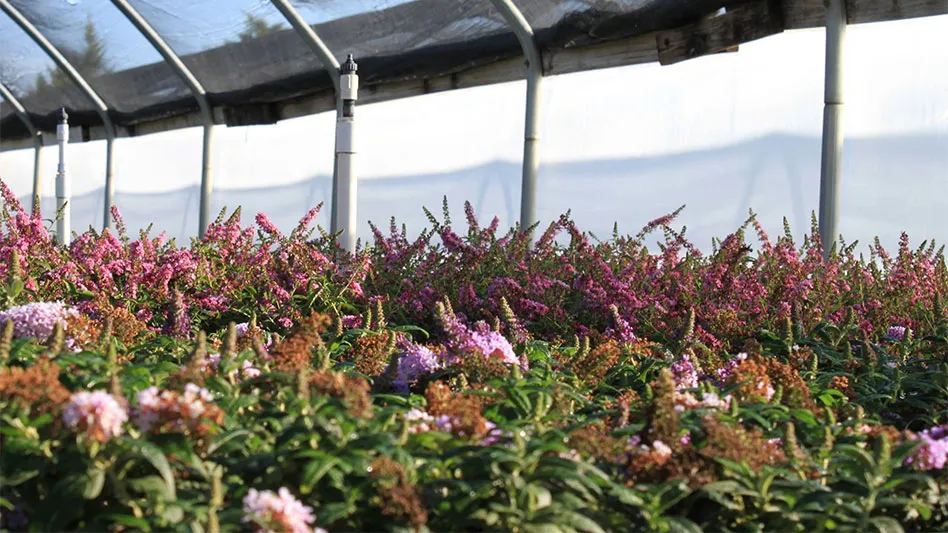
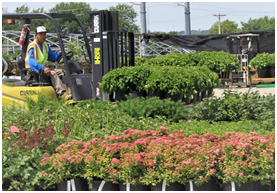
inventory goes deeper than having the right
standard operating procedures in place.
Company culture has a significant impact on the success of a production nursery’s inventory management program. I know because we’ve been there.
Any business that has inventory will have inventory management issues. In our industry, those tend to focus on processes, like storing too many live products that are unable to be sold or lacking inventory to fulfill orders. There’s also incorrect tracking, difficulty locating plant material on-site and not knowing the condition of inventoried plants.
But mitigating inventory shrink is not a process issue alone. Successful inventory management is strategic. It’s centered on the value that the company’s culture – its human component – places on its product.
Like gold bricks lining the gravel all over our nursery, our inventory accounts for a large portion of the company’s assets. It is the same as cash in the bank. But if everyone on the team does not view it that way, those assets will not be treated like gold bricks. In creating a company culture that places high value on inventory, there has to be incentives to care about the company’s financial position.
Every day, team members have choices. They may choose to pick up a plant that fell off a trailer and return it to where it belongs. Or they may choose to leave it lying on the road and send it to the dump pile later. They may – or may not – make the choice to adjust a sprinkler head that is not hitting the entire bed. While that might not seem important, if the four plants on the edge of that bed miss a few waterings, they, too, will end up in the dump pile.
Our training programs and standard operating procedures cover this. But developing a company culture that values inventory goes deeper than having the right standard operating procedures in place.
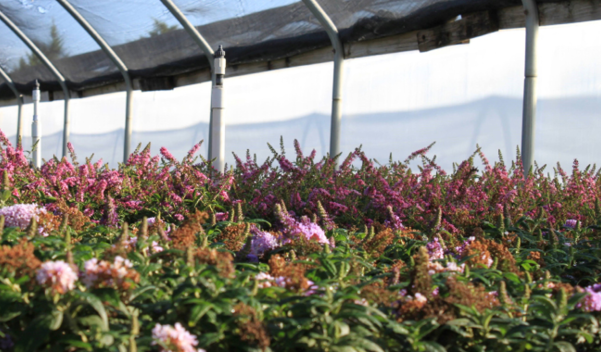
Customers count on this
Even within a culture that places high value on inventory management, shrink happens. None of us has a crystal ball, but anticipating change and building checks and balances into standard operating procedures ensures accuracy.
We’ve found that evaluating how every function of the business uses the nursery’s inventory is a good place to start. Standard operating procedures guide all of our inventory management practices, from production and plant health to sales and shipping.
Having a reward and sharing in the company’s success creates a culture where employees value inventory because its importance is understood. Further, transparency about how the program’s success contributes to the nursery’s key performance indicators keeps the team engaged and invested.
Our inventory control manager is pivotal to ensuring team member engagement. She is a stickler for following standard operating procedures and holds everyone accountable for doing the same. There is no “close enough” with her. She knows exactly “how many, in what condition and where” at all times.
“Inventory” means products that are available for sale and the health and
condition in which they are sold. Customers count on this so it’s really important that we are accurate about what we have and what we need.
It’s a given that the condition of inventory can change, and it can change fast. How well this is communicated between our production and sales teams and our customers matters. In addition to good, old-fashioned data entry, we use handheld devices in the field to document planting, movement, quality and readiness as well as priority pull locations for shipping and shrinkage.
Inventory management includes having plans in place for plant material you create. A five-year rolling sales forecast informs our production and propagation plans. While we buy some liners from outside vendors, we propagate most of our inventory on-site. With these plans in place, along with identified spaces for holding product, we determine the inputs we’ll need like how many propagation trays, nursery containers and sizes, soil, fertilizer and tags.
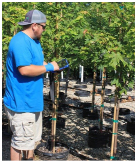
Nursery’s pot-in-pot grower,
uses a tablet to manage,
update and adjust crops
in real-time.
Root cause of loss
We don’t wait until the end of the season or the start of the next to figure out why we may have $1 million more or less in inventory than we did at the same time the year before. If we have more or less than planned, we determine why our counts trend one way or another. Unless we make a business decision to increase or reduce it, our inventory should be consistent and if it isn’t, we find out why and adjust.
In his “Your Market Metrics Key Performance Indicators,” Dr. Charlie Hall, AmericanHort’s chief economist, measures shrink as a percentage of net sales. At Loma Vista Nursery, we use a system of standardized codes to help us identify and quantify loss by reason. Accurate inventory management is critical to identifying cause, and then ultimately to creating company budgets, sales plans and realistic time-frames for product deliverables.
We are always looking for ways to mitigate shrink. Back in 2017, our largest dollar volume loss in the history of our company was attributed to a huge hailstorm that wiped out a large portion of our salable inventory. After that experience, we invested in a different type of shade cloth to cover every single hoop house on the nursery that previously was left uncovered during the growing season. Nothing is foolproof and Mother Nature does contribute to shrink on our nursery.
Winter can be a gamble for us. We spend a lot of time and resources protecting plants through the cold-weather months. We map the location of overwintering plants on-site so we can monitor them frequently. When plants start to wake up in the spring, we quickly assess and evaluate their condition to understand if our overwintering methods were successful.
If specific plants are consistently having overwintering issues, we evaluate different management techniques to learn what will work better. If we cannot successfully overwinter a plant on our nursery, we need to look hard at the sales forecast and maybe even consider dropping the item.
Sometimes things happen that are out of our control and cause shrink to be higher than we would like. But we can still examine what happened and try to improve for next year.
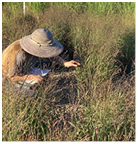
manager, counts plants
and performs a quality
check while immersed
in Loma Vista Nursery’s
healthy crop of
Shenandoah Switch Grass
(Panicum virgatum
‘Shenandoah’).
What’s in your inventory?
Another aspect of Loma Vista Nursery’s inventory management strategy is diversifying the product mix relative to our customer base. We want to plan for every product we will grow. Some of our plants head to Midwest retail destinations. We grow others for the region’s landscape trade. And of course, there is a lot of crossover.
Maintaining “just in time inventory” matters to our customer base and is factored into our management strategy. Producing multiple crops of the same item each year can allow for better inventory management, especially for shorter life-cycle items. But it also typically calls for growing smaller batches. Without proper checks and balances, managing smaller quantities of many items can be a strain on inventory control systems.
It’s also challenging to chase the market for crops that take months or years to produce. Maintaining a consistent sales, production and inventory management system enables us to enjoy high demand cycles and stay afloat during tough times.
Growing nursery stock is stressful enough. Having to worry if supplies will come in on time is added stress that we do our best to avoid. Vendor responsiveness is imperative to managing inventory properly and to meeting sales demand.
Nursery suppliers do not frequently deliver to our area because there are not a lot of other nurseries around us. We keep a good supply of pots, soil and bark in our inventory so that we never run out. This takes resources and space to manage, but it is worth it to have these items in our inventory so we can plant when we need to and not worry about running out.
Like gold bricks
One of Loma Vista Nursery’s core values is “we grow plants we are proud of.” We do this by creating a culture of people who care about the plants we grow. On a micro level, we encourage individuals to ask, “What did I do today that positively or negatively impacted the company’s inventory?” On a macro level, we encourage team members to model leadership, knowing that overall reduction in shrink increases the company’s bottom line and leads to a larger bonus pool for everyone.
When all team members understand the value of the company’s inventory and how their daily action or inaction positively or negatively impacts the big picture, a culture of caring develops – and you can be rest assured that your gold bricks are in good hands.

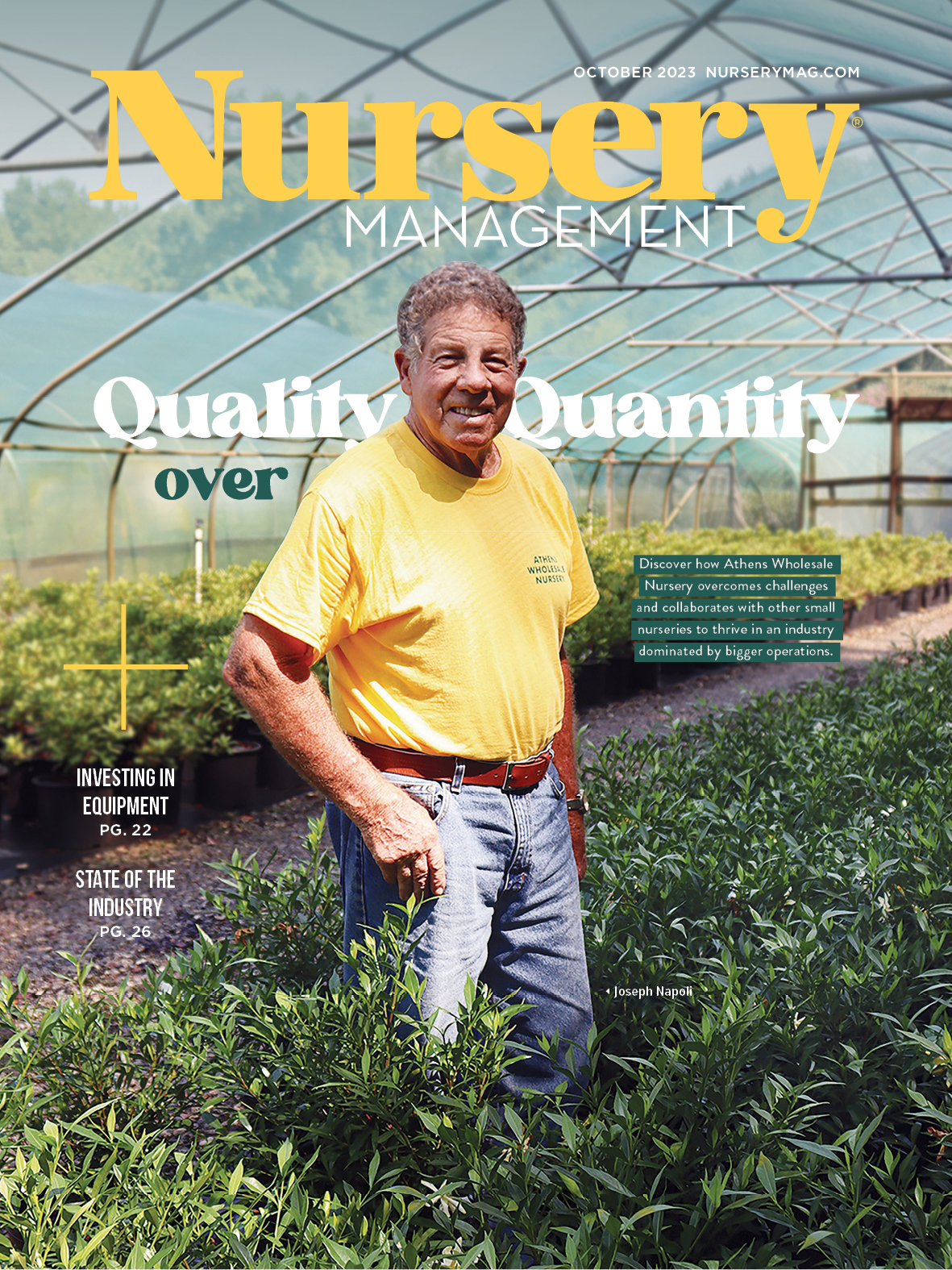
Explore the October 2023 Issue
Check out more from this issue and find your next story to read.
Latest from Nursery Management
- Redesigning the product and process
- GS1 US Celebrates 50-Year Barcode 'Scanniversary' and Heralds Next-Generation Barcode to Support Modern Commerce
- University of Florida offers Greenhouse Training Online program on irrigation water
- Tree Fund announces scholarship and spring cycle grant awardees
- ‘Part of our story’
- Asimina triloba
- Oregon Association of Nurseries announces death of Jolly Krautmann
- Dramm introduces new hose, sprinkler attachments for home gardeners, nurseries





